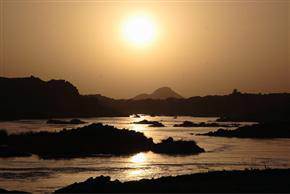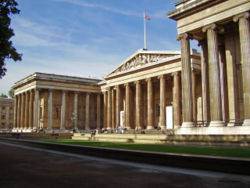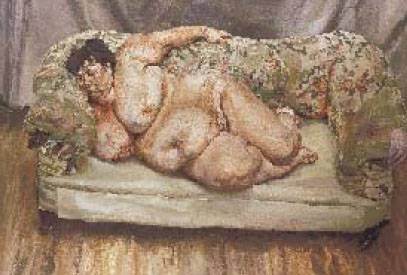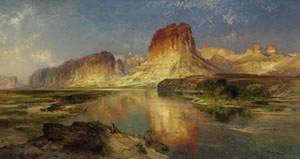
The Fourth catarat in the Nile

The British Museum
The British Museum excavates the Fourth Cataract of the Nile in Sudan
For the past 10 years, the British Museum, in conjunction with the Sudan Archaeological Research Society (SARS), has been working to survey, record and excavate the region surrounding the Fourth Cataract of the Nile in Sudan, prior to the damming of the river. The Fourth Cataract is currently being flooded to provide hydroelectricity for Sudan. The British Museum/SARS team is one of nine international missions under the banner of the “Merowe Dam Archaeological Salvage Project”, which have uncovered thousands of sites dating from the Middle Palaeolithic (150,000 years ago) to the very recent past. The project has revolutionized our knowledge of ancient Sudan.
]]>
October 20, 2008 – Until recently, the cataract zone was considered a poor and inhospitable region, marginalised at all periods. It was considered a border zone viewed primarily as a place of refuge. The MDASP, with the discovery of vast numbers of sites of all periods, some of them of high status such as a granite pyramid and massive fortresses, is forcing a total reappraisal of the nature and role of the region in its Nile Valley context. As a final phase of the project an appeal was made by the Sudan National Corporation for Antiquities and Museums (NCAM) for missions to save from inundation rock art, rock gongs and any buildings that could be moved, for display in a proposed new museum to be dedicated to the ancient and modern cultures of the region.
In response to this appeal the British Museum, in collaboration with Iveco, one of the world’s leading manufacturers of commercial vehicles, New Holland, a leader in the construction equipment business (both companies belong to the Fiat Group) and NCAM mounted a project in November 2007 with the aim of relocating over 50 pieces of rock art and rock gongs dating to between 5,000 BC – AD 1500 as well as the 390 blocks of an early Kushite (c. 8th-5th century BC) granite pyramid, along with its offering chapel and enclosure wall.
With the aid of two Iveco Eurocargo four-wheel drive vehicles, one equipped with a crane provided specifically for the project by the Group’s headquarters in Turin and with a back hoe supplied by New Holland, the mission was successfully completed.
In recognition of the efforts of this mission, 20 blocks were donated to the British Museum and it is hoped that early next year some of these can be put on permanent display along with other material from the region of the Fourth Cataract. This will allow the Museum to highlight the rich and vibrant cultures of the region as well as the efforts of the Sudan Antiquities Service and the international community to research into and preserve where possible the ancient cultures of this important part of the Nile Valley. The blocks include examples of early rock art on basalt and granite featuring anthropormorphs, camels, sheep and cows, an animal of particular importance to the people living in the region. One block features a small but finely executed human figure with a feather in its hair, the traditional way the people of this region were depicted by the ancient Egyptians. Two rock gongs have also been given to the Museum, these slabs of rock would have been played by striking them with quartzite pebbles, producing a quite extraordinary range of melodious sounds. Rock gongs and rock art are often found together and are suggestive of an important ritual landscape.
Derek Welsby, Curator in the Department of Ancient Egypt and Sudan at the British Museum and head of the mission said ‘The work at the Fourth Cataract has transformed our view of the Middle Nile Valley in northern Sudan and we are pleased to have been able to assist in the rescue of these important archaeological objects. The contribution of Iveco and New Holland was very considerable, we would not have been able to conduct this project without their input’.
Follow us on:


